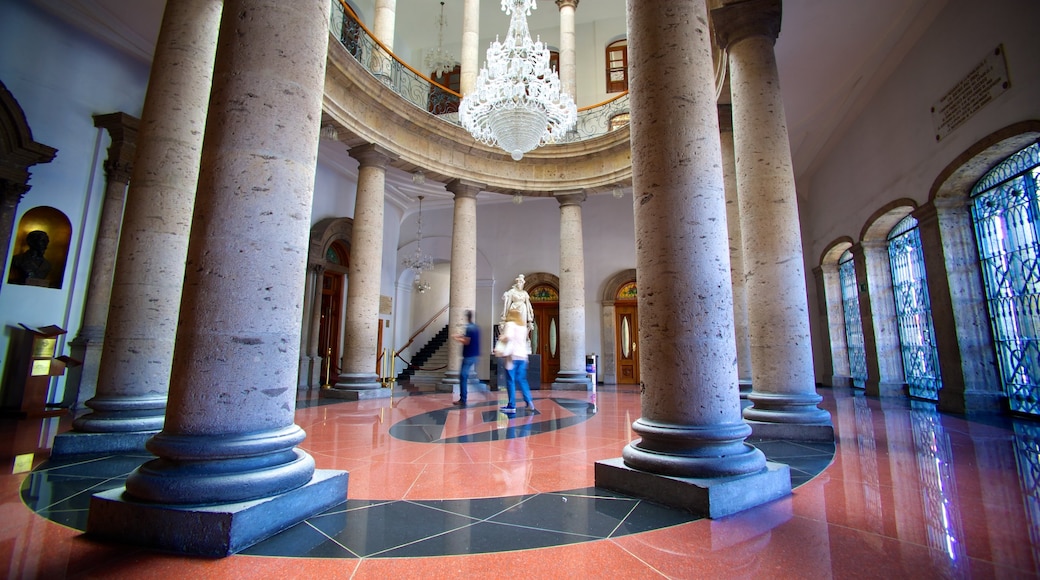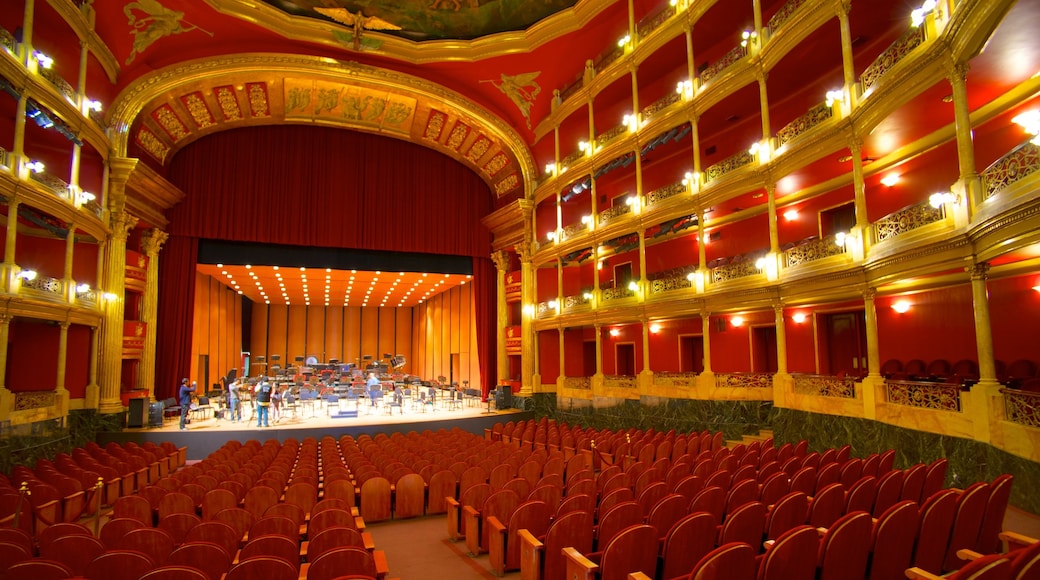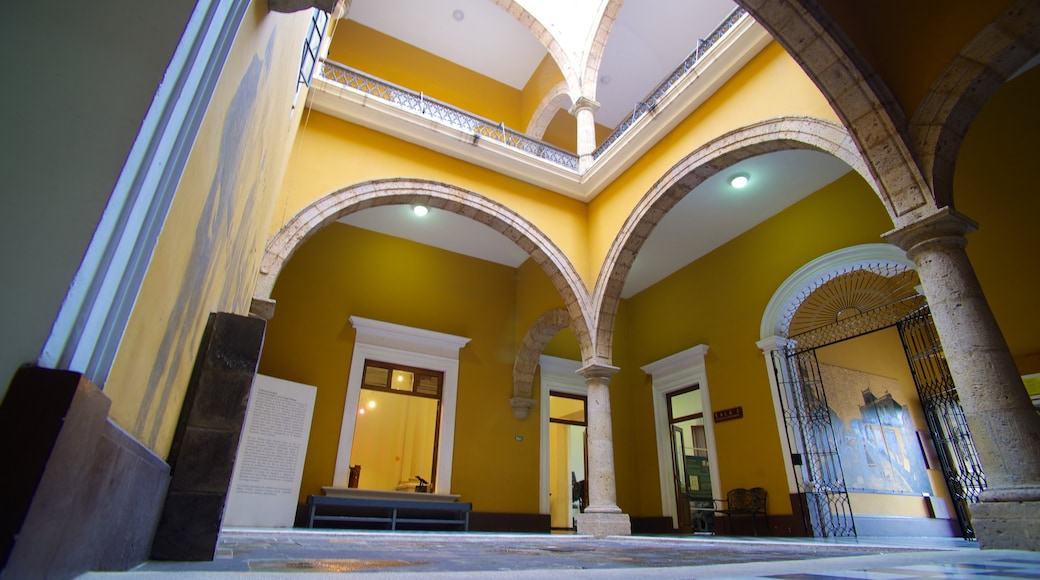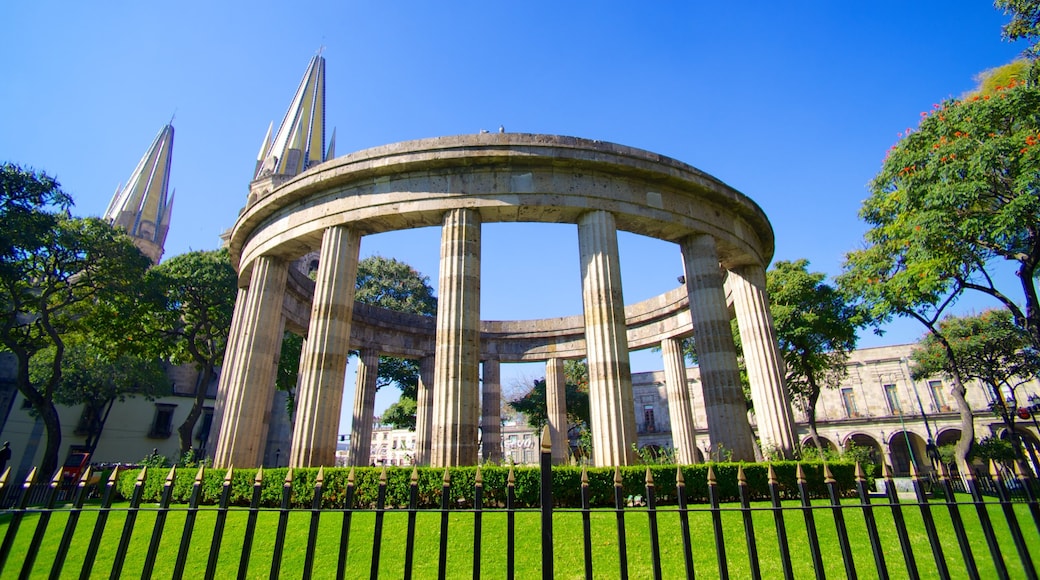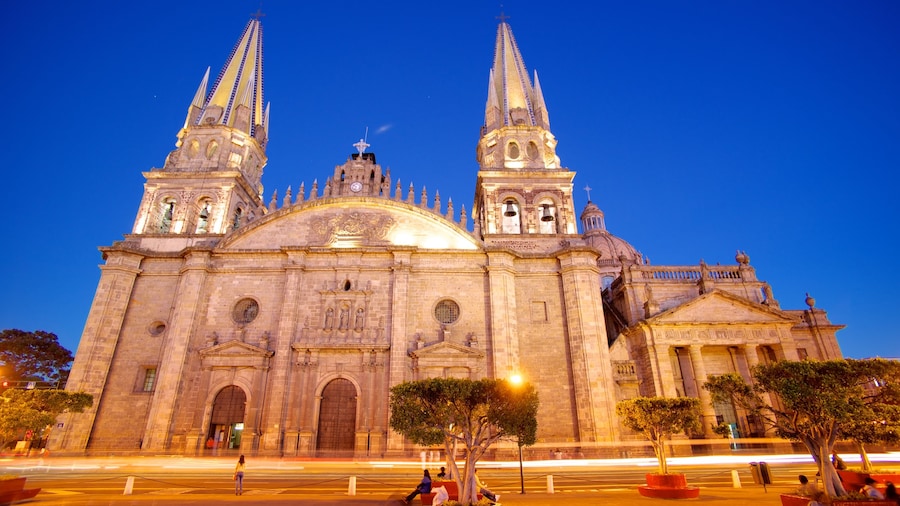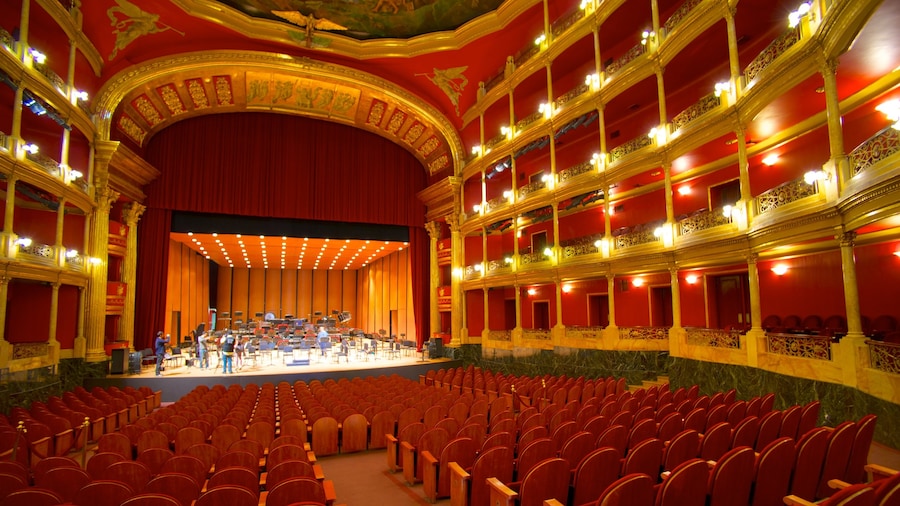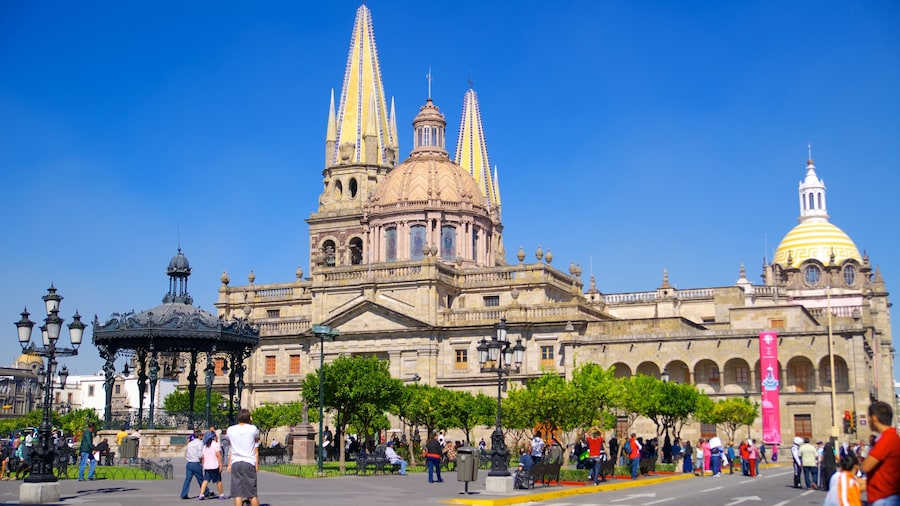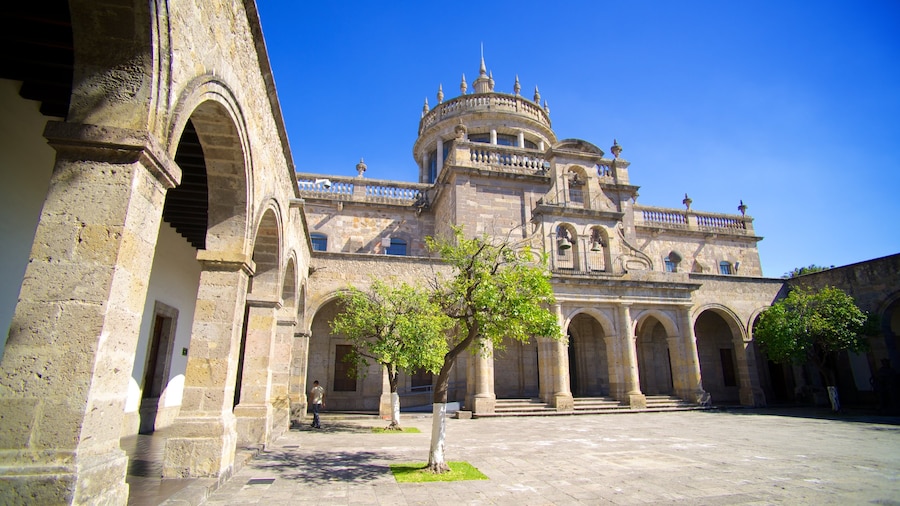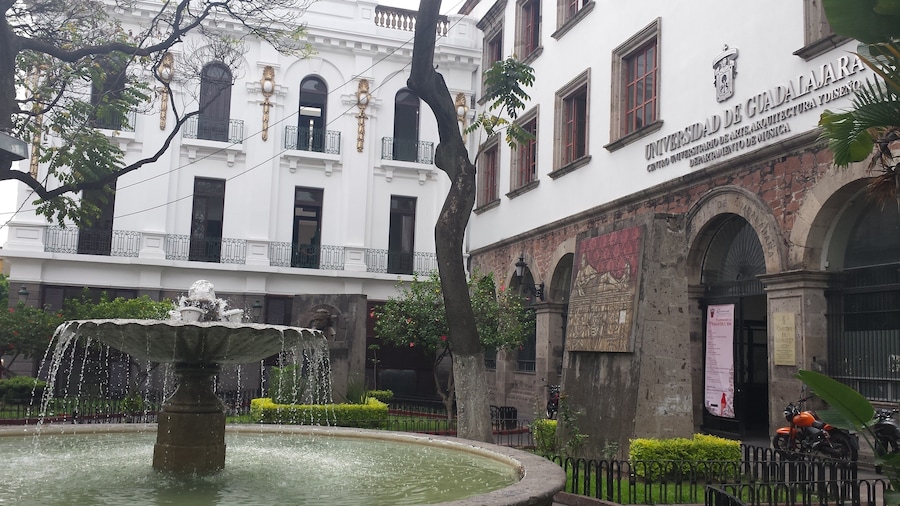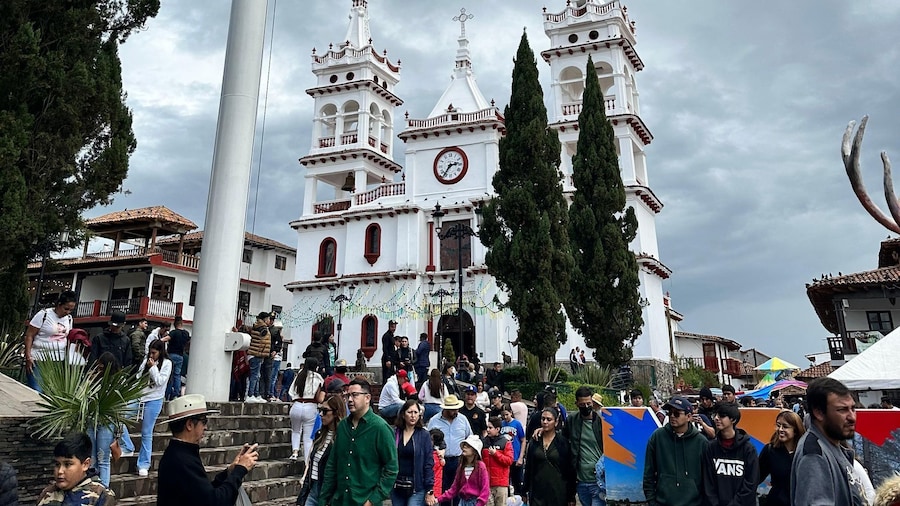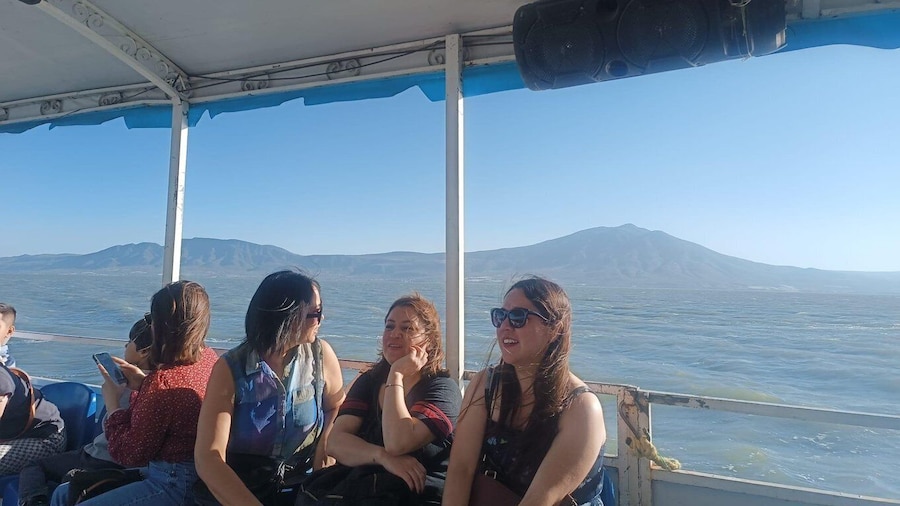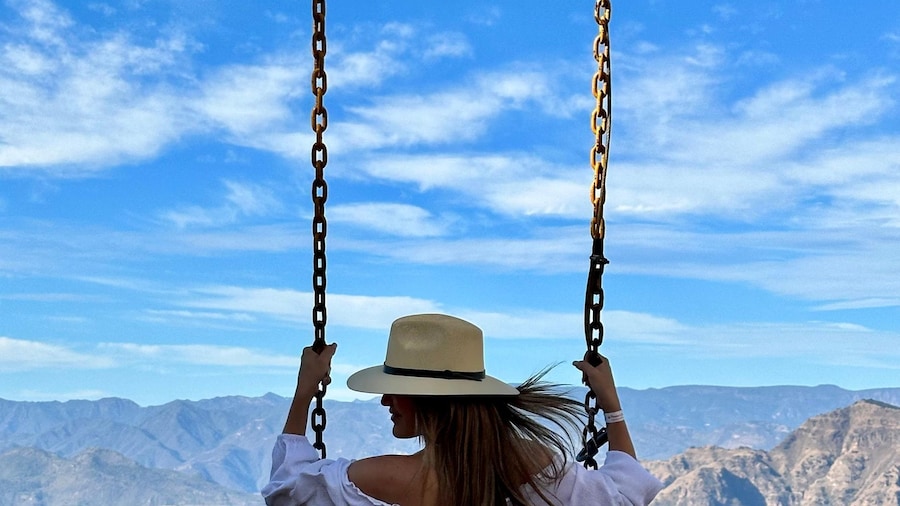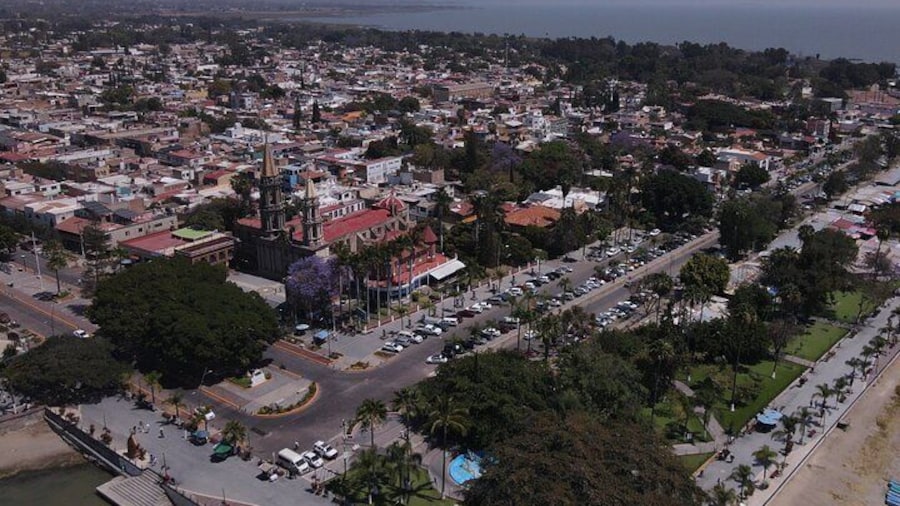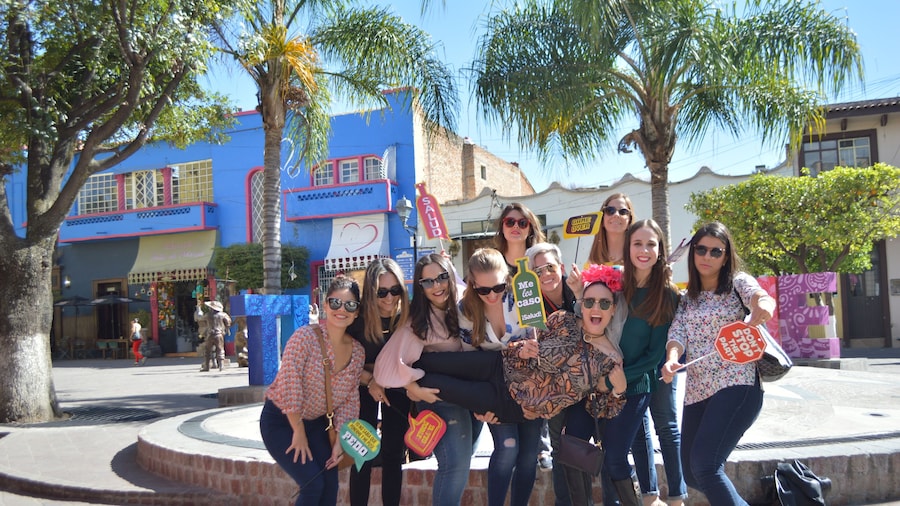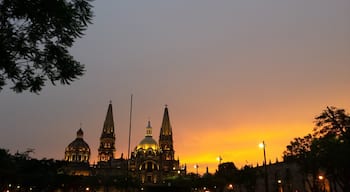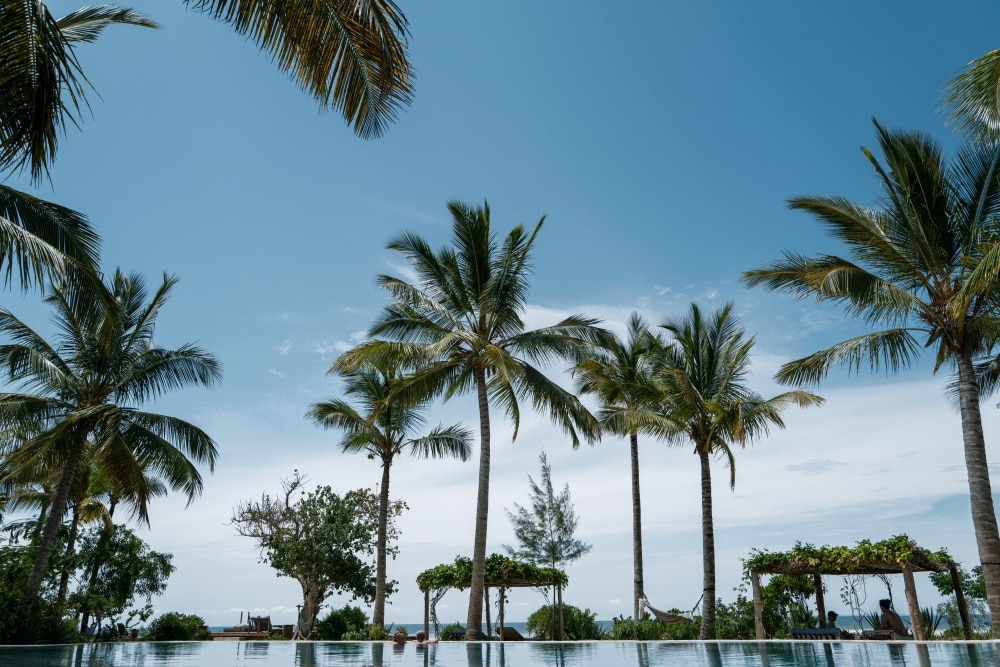Double spires of the neo-Gothic cathedral rise above the central plaza beside a glorious rotunda and a majestic theatre in this preserved historic district.
Visit the Centro area of Guadalajara to see an exceptional layout of historic architecture that transports you to the colonial era. Neoclassical treasures adorn the plazas, while the covered Mercado Libertad provides insights into local culture. Try botana appetisers and tequila in traditional cantina bars.
As you travel through the city centre, notice the twin neo-Gothic spires of the Guadalajara Cathedral. Consider the mix of architectural styles in this minor basilica, which has been renovated many times since its inception in the 1500s. Inspect the cathedral’s large organ and study The Immaculate Conception mural by Bartolomé Esteban Murillo.
The cathedral overlooks the Plaza de la Liberación, a pedestrian hub with two fountains and surrounded by many historic buildings. On the square’s eastern side, notice the Teatro Degollado, its neoclassical façade imbued with an imposing pediment, sculptures and columns. It was constructed in 1866 and continues to play a key role in the city’s opera and dramatic arts scene.
Look to the plaza’s northern side for the Regional Museum of Guadalajara, which traces the history of the city. Marvel at the woolly mammoth skeleton and examine the artefacts made by pre-Hispanic people.
Next door, gaze up at the Rotonda de los Jaliscienses Ilustres, a large memorial to some of the city’s most acclaimed artists, musicians and historic figures.
At the plaza’s southwestern corner is the Plaza de Armas, with its charming bandstand. Admire the impressive frontage of the adjacent Palacio de Gobierno. Head east to the Instituto Cultural Cabañas, a former orphanage and hospital.
Guadalajara’s Centro zone occupies the core of the city. It lies between the neighboring districts of Jardines del Country, La Perla, Villaseñor and Americana. Walk north from the Parque Agua Azul for about 45 minutes to reach this area.
